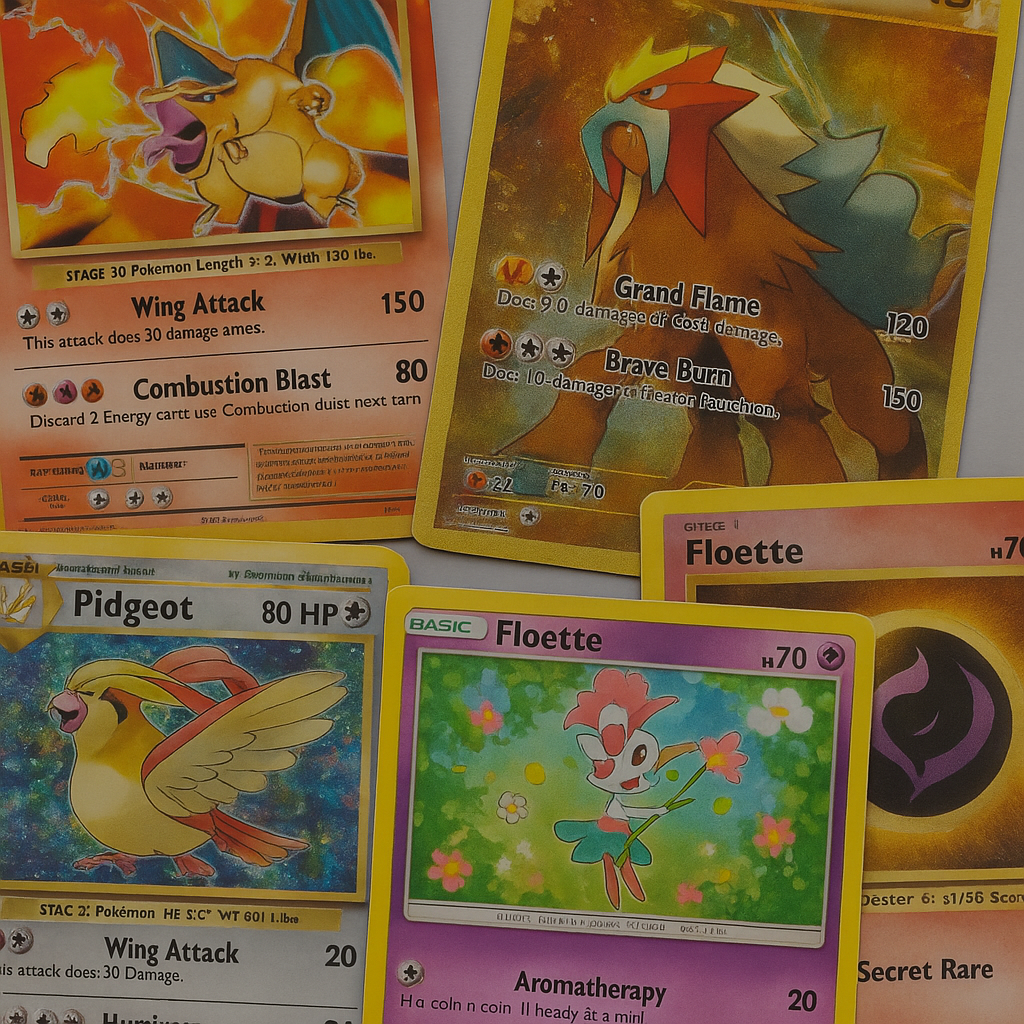
The Ultimate Guide to Pokémon Card Rarities: What You Need to Know
Share
Whether you're just starting your Pokémon card collection or have been collecting since the late '90s, understanding card rarities is essential. Knowing the rarity of your cards not only helps you determine their value but also helps you become a more informed buyer, seller, or trader. In this comprehensive guide, we break down everything you need to know about Pokémon card rarities.
1. Understanding the Basics: What Is a Rare Pokémon Card?
At its core, the rarity of a Pokémon card refers to how often that card appears in booster packs. Common cards are plentiful, while ultra-rare and secret rare cards are much harder to find. Rarity plays a big role in both the value and the collectibility of a card.
2. Identifying Rarity Symbols
Every Pokémon card has a rarity symbol at the bottom right corner:
- Circle (○) = Common
- Diamond (◆) = Uncommon
- Star (★) = Rare
- Star with other markings (holo, color changes) = Ultra Rare or Secret Rare
These symbols are the most basic indicator of rarity, but there's much more to it.
3. Different Types of Rare Cards
Let’s explore the most well-known rarity categories in modern Pokémon TCG:
Rare Holo (Holographic)
These cards feature a shiny, holographic artwork of the Pokémon. They still have the traditional star rarity but stand out due to their shimmering effect.
Reverse Holo
In reverse holo cards, the background (excluding the artwork box) is holographic. This feature was introduced in later expansions and adds a visual twist to even common and uncommon cards.
Ultra Rare
Ultra Rares go beyond standard holographics. These include:
- EX/GX/V/VSTAR cards
- Feature full-art Pokémon or trainers
- Have unique textures or foiling
- Are generally harder to pull
Full Art Cards
Full Art cards have artwork that stretches across the entire card. They often belong to the ultra-rare category and are a favorite among collectors for their stunning visuals.
Secret Rare
These are the rarest cards in a set. You can identify them by their set number, which will be higher than the total number of cards in that set (e.g., 151/150). They often have gold borders, rainbow foiling, or other unique features.
4. Japanese vs. English Rarity Differences
Japanese Pokémon cards often have a slightly different rarity system and release schedule. In some cases, rare cards are released in Japan months before their English versions. Additionally:
- Japanese cards may use alternate artwork
- Rarity symbols can be subtler
- Print quality tends to be higher, making Japanese cards prized among collectors
5. Where to Find Rare Cards
Rare Pokémon cards are typically found in:
- Booster Packs: Randomized cards, best chance at pulling rares
- Collection Boxes: Feature promo rare cards
- Elite Trainer Boxes: Come with booster packs and additional goodies
At Pokedans Emporium, we offer all of these options, including exclusive Japanese and Korean booster packs that give collectors access to cards not yet available in English markets.
6. Grading and Valuation
Rare cards increase in value depending on their condition and grading. Professional grading services like PSA or Beckett assign a score (1–10) based on centering, surface, corners, and edges.
- Mint or Gem Mint (9 or 10) cards fetch the highest resale value
- Ungraded cards are still valuable, especially if they’re well-preserved
Grading is optional but can significantly increase a card’s desirability.
7. Fake vs. Real Rare Cards
Counterfeit cards can often mimic rare and ultra-rare cards. Look out for:
- Off-color printing
- Misaligned text
- Thinner cardstock
- No light reflection from foiling
If you’re unsure, compare with a card from a reputable source, or buy only from trusted stores like Pokedans Emporium.
8. Collecting Strategy: What Should You Focus On?
It depends on your goals:
- Casual Collector: Focus on sets or Pokémon you love
- Investor: Target full-art, ultra-rare, and graded cards
- Player: Look for competitive cards used in the TCG scene
Having a clear strategy helps you avoid overspending and builds a focused, meaningful collection.
9. Final Tips for Collectors
- Keep cards in sleeves and binders
- Avoid touching the foil directly
- Store in a cool, dry place
- Use top loaders for ultra-rare or graded cards
Consistency in care helps preserve value and enjoyment.
10. Conclusion: Rarity Is Just the Beginning
Pokémon card rarity is an exciting part of collecting, but it’s just the beginning. Whether you’re chasing a rainbow Charizard or completing a binder of reverse holos, understanding rarity adds a whole new level of appreciation.
At Pokedans Emporium, we provide collectors with a diverse and authentic selection to suit every level. Explore our latest drops in English, Japanese, and Korean cards today, and begin your journey into the thrilling world of Pokémon TCG!
